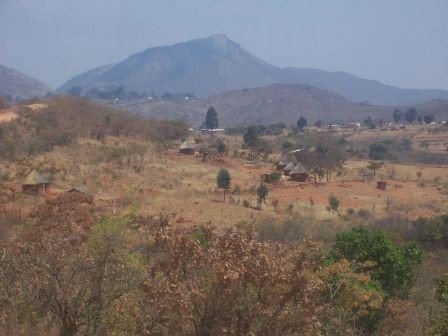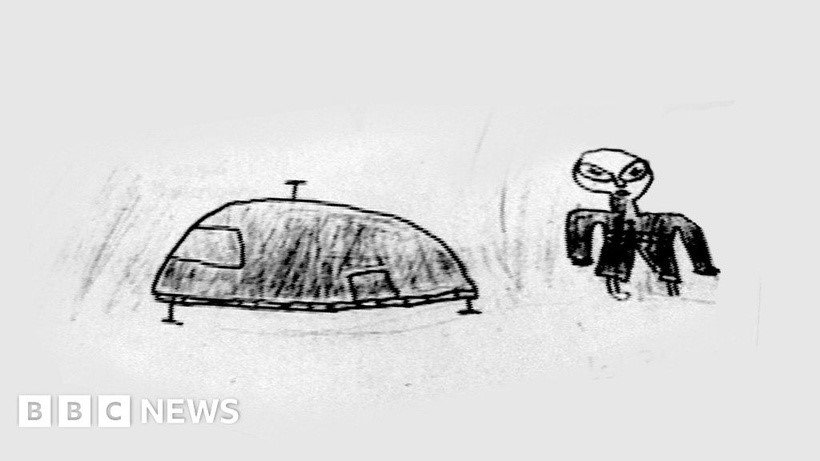An Out of This World Recess
On September 16, 1994, sixty-two young students at the Ariel School in Ruwa, Zimbabwe reported a close encounter with a UFO during their recess. Some say that this is a remarkable moment in the world of UAP, but as with many unexplainable things, it comes with its fair share of skeptics.
To set the scene, Zimbabwe is an inland country located in southern Africa, home to the stunning Victoria Falls and incredible, diverse wildlife. The capital, Harare, is a city of about two million people, and like most capital cities, it is a hub for trade, business, culture, and history for the nation.
Ruwa, Zimbabwe (Damien Farrell, September 15, 2006)
Southeast of Harare by about 15 miles is the suburb of Ruwa, which serves as a business center for the surrounding farmlands. Though it’s grown considerably since 1994, at the time, Ruwa was a small town, and it was home to the Ariel School, an expensive private school for primarily wealthy white families based in Harare.
On the morning of September 16, students between ages six and twelve were outside for a break while their teachers had a meeting inside the school. In a span of about fifteen minutes, the children claim to have seen a silver disc-like object land in a nearby field. According to some students, strange beings could be seen exiting the craft and they allegedly communicated telepathically with some of the children.
When recess ended, the students told the teachers what they had seen. As you can imagine, the teachers were skeptical, and they went back to finishing up the school day. However, at the prompting of parents, local ufologist Cynthia Hind, and the Zimbabwe correspondent to the BBC Tim Leach, in the days following the event the students were interviewed and asked to draw what they had encountered, in an attempt to get a full picture of what they experienced.
Child's drawing of the incident (BBC News, July 2021)
What many find remarkable about this story is that most of the children not only recounted extremely similar versions of the event, but many of the things that were reported were similar to other accounts of UFO sightings or encounters throughout the world. As a skeptic, my first reaction was to shake my head and start counting down the reasons why this would be expected to occur.
First, something I used to teach my bank teller classes when we’d have robbery training is that immediately after the incident, it’s imperative to isolate witnesses from one another and have them document what they experienced- what they saw, what they heard, what they smelled, everything they can possibly think of. Once witnesses begin to share stories, or once time has been allowed to pass, it is almost ALWAYS the case that stories begin to shift and change. Not by anyone’s ill intent, but because of the nature of how our brains work. The students at Ariel School were never isolated and began sharing stories amongst themselves and their teachers immediately, and then they went home and continued talking about the experience, for days (and in some cases months) before they were interviewed, and their answers recorded.
To elaborate on this, sharing stories and comparing accounts is also a contributing factor to instances of mass hysteria. It often doesn’t take much to get a story going, and just like a game of telephone, that story evolves as it moves along, generally becoming bigger and more intense as it goes. I bring this up because at the time of the Ariel School Phenomenon, occurrences of mass hysteria in African schools were rampant. I’d be remiss to not mention that in conjunction with this story, and it definitely gave me another box to check off in the “skeptic” column.
Lastly, the students spoke about a silver flying saucer with a greenish alien, dressed in black. This was 1994, and reports of flying saucers and little green men had been pop culture fodder for nearly half a century at this point. While Ruwa is a rural town, it wouldn’t have been impossible for these children to be familiar with those sorts of details, and therefore, not surprising that they recounted them in such a way. It’s important to note that at the time of the children’s experience there had been a rash of sightings throughout Africa, and it had been in the news. Again, while many of the children may not have been aware of that, it’s also incorrect to assume that it would have been impossible for them to have been exposed to the idea whether in the news itself or by listening to their family, friends, neighbors, or even their teachers bring it up in conversation.
Many people of course were skeptical like me, but not everyone. Aside from Hind and Leach, a Harvard psychiatrist named John Mack traveled to Zimbabwe to interview the students and assess the situation. Mack was a psychiatrist and researcher who was respected for his work with child and adolescent psychology and understanding drug addiction, among other things. He was not only a professor at Harvard, but he was head of the Psychiatry Department of their Medical School for nearly thirty years.
Dr. John E. Mack (AP, 2012)
In the 1990s, he became interested in studying the psychology behind alien abduction stories, assuming that those who claimed to have these experiences were instead experiencing mental illness. However, once he began conducting interviews, his subjects did not present signs of mental illness as he expected, sending him down a fateful research rabbit hole that led him to not only the Ariel School but eventually to an investigation by his clinical peers. While Harvard eventually said that it was “professionally irresponsible” to engage in this subject and censured him for “methodological errors” in his study, he was, in the end, able to continue his work and remained a faculty member in good standing until he passed away in an accident in 2004.
Mack traveled to Zimbabwe in November 1994, nearly 2 months after the incident. During his time there, he also interviewed the children, and while his investigation revealed responses nearly identical to those of Hinds and Leach, his report also indicated that the alien beings had communicated telepathically with some of the students and gave them a message warning them that they should protect the environment.
In the years following the Ariel School UFO incident, ufologists and skeptics alike picked apart the story, and it became the subject of countless articles, books, documentaries, podcasts, and films. While many believers consider this to be a remarkable and compelling instance of extraterrestrial activity, still to this day, many others have poked holes in the story, citing potential data contamination thanks to poor interviewing techniques, mass hysteria, and even a supposed confession by a former student that this was all a big hoax.
In 2023, an episode of Netflix and VICE’s “Encounters” includes Dallyn, a student at the time who claims that he and a friend made up the story to get out of class. He says they started pointing and claiming to see the UFO and alien and the story spread like wildfire. While he admits that his classmates may have truly believed (and continue to believe) that they saw what they claim to have seen, he is equally as adamant that it was a result of his active imagination. Backing that up, many students who were there did NOT see anything, and with something that huge (both physically and emotionally) happening, it’d be hard to miss it.
In the end, it will likely never be known what really happened at Ariel School that September day in rural Zimbabwe over thirty years ago. The truth that cannot be denied however, is that the incident changed the lives of so many forever- skeptics and believers, children and adults, elementary school students and Harvard professors alike.



